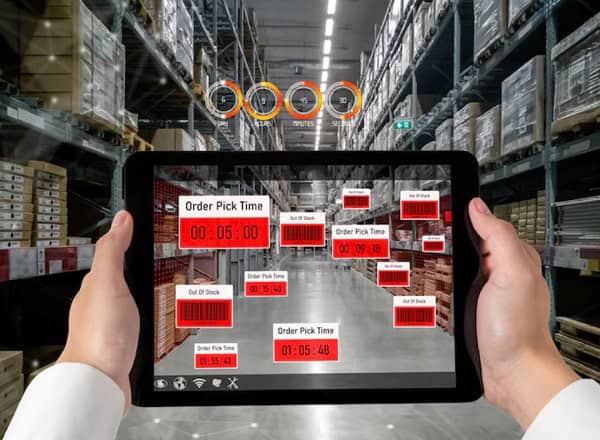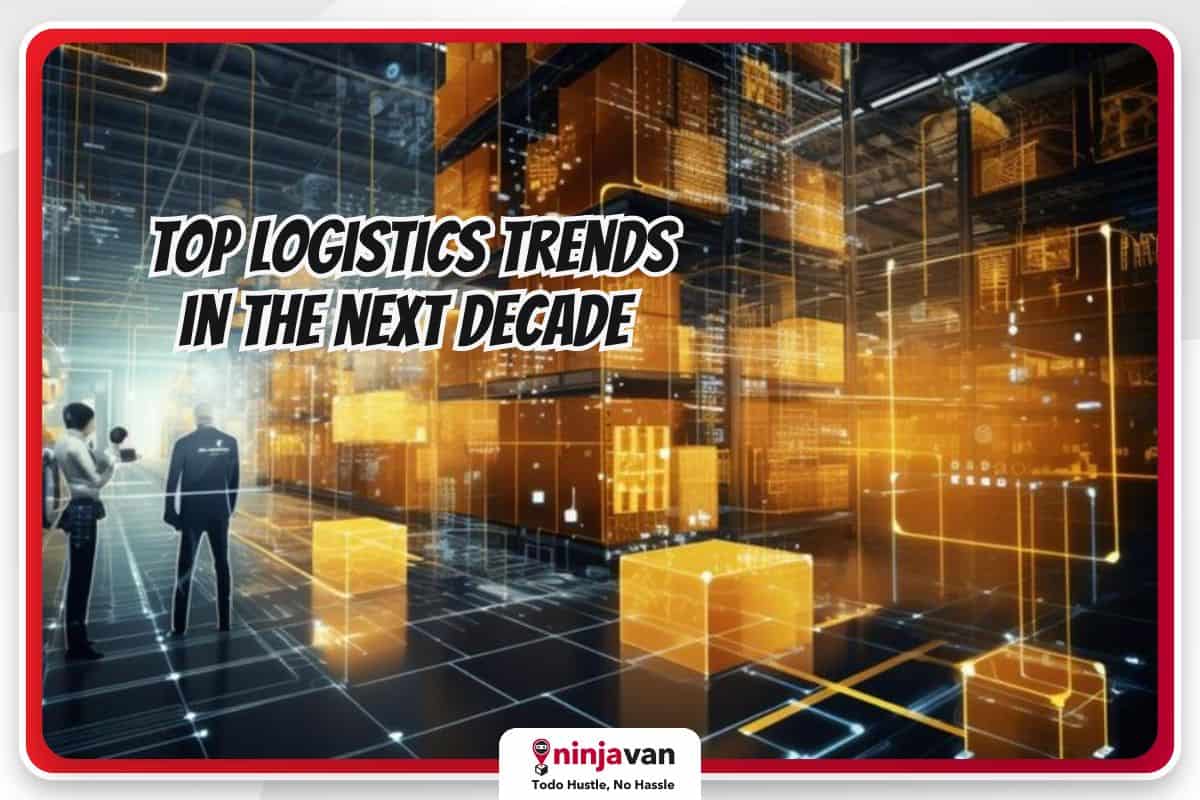The future of logistics is undeniably intertwined with AI tools and digital innovation. After all, technology is already deeply integrated into the industry — from automated warehousing and fulfillment to real-time GPS tracking.
It’s only a matter of filtering which digital trends and innovations to incorporate into existing systems. From there, it would be easier to make logistics predictions and project their long-term impact on the industry.
Let’s dig deeper into the impact of technology on the future of logistics and how it will shape ecommerce trends in the coming years.
Also read: How Ninja Van Uses AI in Logistics
How technology impacts logistics
Technology has been at the forefront of logistics trends for years. Digital innovations have improved delivery times and the overall buying experience for consumers. Meanwhile, ecommerce businesses are running more efficiently at lower operating costs because of these advancements.
Here’s a rundown of technological transformations that elevated the logistics industry and shaped ecommerce as we know it today:
Real-time GPS tracking of parcels
Real-time tracking is a major gamechanger in the logistics industry. It provides full visibility of parcel movement, resulting in secure order fulfillment.
More importantly, it enhances customer satisfaction because consumers know exactly where their parcel is, from the moment it leaves the warehouse or distribution center through the time it arrives at their doorstep.
Tech-enabled warehouse and fulfillment operations
Technological transformation covers a wide range of advancements, from the use of robots for packing products to the integration of logistics management software into existing order fulfillment systems for transparency.

Customizable and flexible delivery schedules
Ecommerce customers want their orders to arrive as soon as possible. For this reason, logistics service providers are embracing technology to enable express delivery and win over more consumers. On the other hand, some customers also enjoy the convenience of customizing delivery options based on their schedule.
Flexible delivery is now an industry standard. Customers can choose the parcel delivery time and location, depending on what matches their schedule.
Convenient and varied payment options
Perhaps one of the greatest — and one of the most overlooked — changes we’ve seen in recent years is the emergence of e-wallets and other online payment options for hassle-free ecommerce transactions. This streamlines cart checkout, resulting in a positive shopping experience for customers. It also offers a more secure payment processing system for businesses.
Data-driven analysis and reporting
Data is at the heart of ecommerce logistics because it helps businesses better understand customer behavior. As a result, it becomes easier to forecast demand, manage inventory and fine-tune order fulfillment processes to ensure smooth and steady operations that meet consumer demands.
Data analysis also plays a key role in logistics predictions, such as blockchain integration, drone deliveries and delivery hyper-personalization.
5 logistics trends in the next decade
Automation and digitalization are at the forefront of logistics trends. They’re constantly evolving to streamline warehouse operations. Meanwhile, predictive analytics are answering the call for improved supply chain performance.
Of course, sustainability and green initiatives play a major role in the future of logistics as businesses and consumers strive for environmental friendliness.
Let’s take a closer look at these logistics trends and predictions.
1. Exploration of automation, AI and robotics
Logistics service providers must start embracing and exploring automation and robotics now to stay ahead of the game. These technologies streamline day-to-day operations by tackling the concerns of different system functions, such as inventory management, order processing and delivery.
All these are likely to be integrated into an instinctive, centralized system within a few years. As a result, order fulfillment will be faster and more accurate than ever.
2. Integration of big data and predictive data analysis
With further integration of big data into logistics systems, the industry can look forward to generating predictive insights that could address persistent issues and minimize operational risks.
Big data is also likely to provide deeper insights into consumer behavior and demand patterns. This will, then, influence business decision-making, leading to more effective supply chain optimization.
3. Use of IoT in real-time GPS tracking
IoT is opening up a lot of doors for the logistics industry. It’s already integrated into real-time tracking devices, such as GPS trackers and RFID tags.
As IoT evolves over time, it will be capable of providing more accurate data, such as parcel location, condition and delivery status. This will result in optimal visibility of parcel deliveries. Businesses can take advantage of this visibility to streamline delivery routes and reduce delays and disruptions.
Smooth and on-time order fulfillment is the ultimate result of integrating IoT-enabled devices for parcel tracking.

4. Delivery drones and self-driving vehicles
Last-mile delivery has always been one of the greatest logistics concerns. But with the help of self-driving trucks and drones, fulfillment service providers might eventually open the doors to faster and more accurate parcel delivery.
Self-driving trucks are capable of operating around the clock, reducing labor costs without compromising time efficiency. These autonomous vehicles are being tested with AI features and state-of-the-art sensors for safe navigation.
Drones — which could provide fast delivery of small, lightweight packages — are also being tested for last-mile delivery. But regulatory concerns could delay the application of delivery drones.
5. Sustainability efforts and green initiatives in logistics
Global heating is a challenge that the entire world faces. So it’s no surprise that the logistics industry will take a steady shift toward an environmentally friendly approach that boosts energy efficiency and reduces carbon footprint.
This goes beyond using biodegradable packaging solutions.
Although it wouldn’t happen overnight, sustainable logistics will eventually see a growing fleet of electric and hybrid vehicles for order fulfillment. Meanwhile, more companies are exploring the use of solar power and other renewable energy sources for warehouses and distribution centers.
Work with logistics experts who embrace trends and technology
All these logistics trends are pointing toward greater efficiency and sustainability. They’re constantly evolving to improve everyday operations and enhance customer experiences, too.
So it’s important to team up with not only an established logistics service provider but also one that proactively invests in the future of logistics.

Ninja Van continuously innovates to help our shippers streamline their operations and optimize their business for growth. We provide one-stop logistics solutions that seamlessly integrate with their current processes.
Talk to our logistics experts to get customized solutions today!
Learn about trends that will help boost your business:
Ecommerce Trends that Have Changed Logistics
Consumer Behavior Trends and Strategies in 2024
Email Marketing Tips and Trends for 2024







